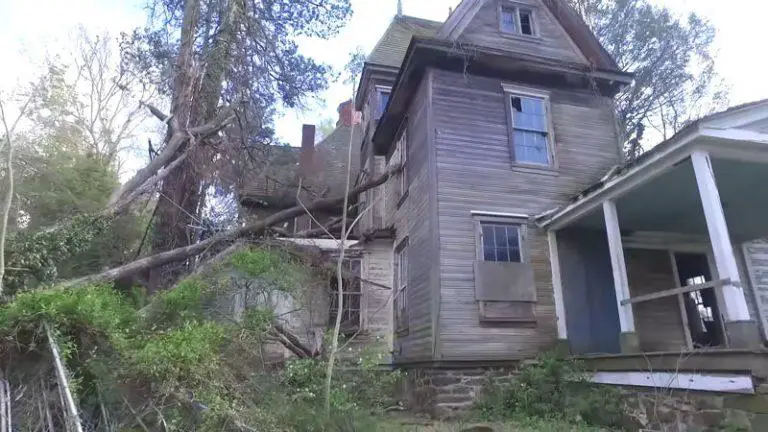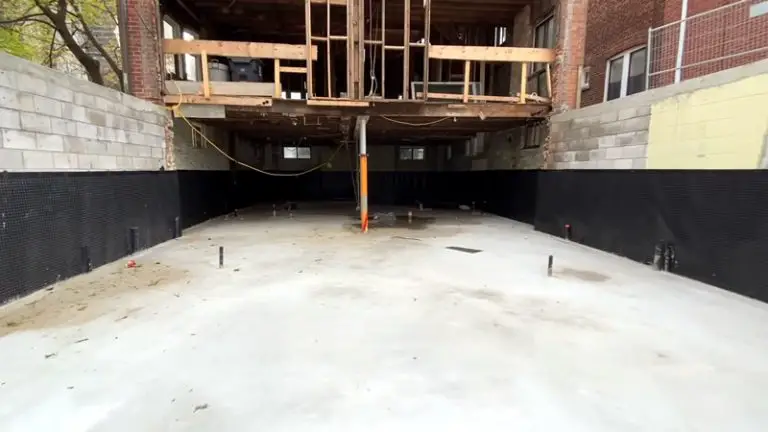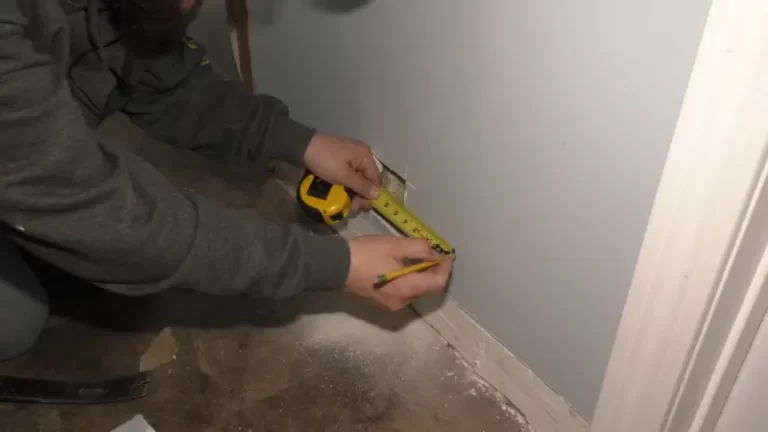How to Find Rim Joist on House?
A rim joist is a crucial structural component of a house, serving as the end board that connects the floor joists to the sill plate and provides support for the flooring system. Finding the rim joist is important for a number of reasons, including for the installation of insulation, repairs to the flooring, and access to plumbing and electrical systems.
In this blog, we will guide you through the steps of locating the rim joist in your house, so you can tackle any home improvement project with confidence.
Understanding the Location of Rim Joist
Introduction A. Explanation of what a rim joist is A rim joist, also known as a perimeter joist, is a horizontal framing member that runs along the outside edge of a house’s floor system. It connects the ends of the floor joists and helps provide support and stability to the structure.
Rim joists are critical components of a building and are essential for the overall integrity and safety of a house.
Importance of Finding the Rim Joist in a House
Finding the rim joist in a house is important for several reasons. Firstly, it can provide a solid anchoring point for attaching deck ledger boards or installing additional insulation. Secondly, it can be used to secure plumbing and electrical rough-ins during construction.
Thirdly, it can help identify the location of load-bearing walls and support beams. Finally, it can also be used to determine the dimensions of the house for renovation or remodeling purposes.
Overview of the Steps to Finding the Rim Joist
The steps to finding the rim joist in a house are straightforward and can be easily completed by anyone with basic DIY skills. The process typically involves accessing the basement or crawlspace and visually inspecting the structure to locate the rim joist. In some cases, you may need to remove a portion of wall or floor covering to gain access to the rim joist.
Understanding the Location of Rim Joist A. Explanation of the role of rim joist in a house structure The rim joist plays an important role in the structure of a house. It helps support the floor system and transfers loads from the floor to the foundation.
The rim joist also helps prevent the floor joists from sagging or twisting and helps keep the floor level and stable.

How Rim Joist is Placed in Relation to Floor Joists
The rim joist is typically placed along the outside edge of the floor system and runs parallel to the floor joists. It connects the ends of the floor joists and helps provide additional support to the structure. The rim joist is usually fastened to the ends of the floor joists with metal plates or wood blocking, creating a strong and stable connection.
Factors That Affect the Location of the Rim Joist
The location of the rim joist can be affected by several factors, including the size and height of the house, the type of foundation, and the type of floor system. For example, in a multi-story house, the rim joist may be located in a different location on each floor.
Additionally, the use of open-web floor trusses can also affect the location of the rim joist. It is important to understand these factors when trying to locate the rim joist in a house.
finding the rim joist in a house is a straightforward process that can provide valuable information for renovation, remodeling, and deck-building projects. Understanding the location and importance of the rim joist can help you make informed decisions about your home’s structure and ensure that any changes you make are safe and secure.
Locate Rim Joist From the Basement
Explanation of How to Find Rim Joist From the Basement
The basement is the most accessible location to start searching for the rim joist. If your house has a basement, it is relatively easy to identify the rim joist. First, locate the floor joists and examine the connection between them and the exterior walls of the house.
The rim joist is usually connected to the end of the floor joists and runs along the perimeter of the house.
Description of What to Look for in the Basement
In the basement, you should look for a large, horizontal beam that runs along the exterior walls of the house. The rim joist is typically made of wood and is the same thickness as the floor joists. It is important to look for any signs of rot, water damage, or termite infestation, as these can weaken the rim joist and compromise the structural integrity of the house.
Using a Measuring Tape to Identify the Rim Joist
Once you have located the rim joist, use a measuring tape to determine its width and length. The rim joist should be the same thickness as the floor joists and run the full length of the house. If you find that the rim joist is not the same thickness as the floor joists, or if it is shorter in length, it may indicate that the rim joist has been replaced or repaired.
In this case, it is important to have a professional inspect the rim joist to ensure that it is still structurally sound.
By following these steps, you should be able to easily locate the rim joist in your house and determine if it is in good condition. If you find any signs of rot, water damage, or termite infestation, it is important to have a professional inspect the rim joist and make any necessary repairs to ensure the structural integrity of your house.
Finding Rim Joist From the Exterior
Explanation of How to Find Rim Joist From the Exterior of the House
Finding the rim joist from the exterior of the house is a simple and straightforward process. However, it is important to take safety precautions, such as using a sturdy ladder and having someone hold it, before proceeding with the following steps.
Identification of the Rim Joist Using a Ladder
To identify the rim joist from the exterior, look for the ends of the floor joists that extend beyond the exterior wall. The rim joist will be located at the point where all the floor joists come together. It is typically wider than the floor joists and runs parallel to the exterior wall.
How to Measure the Distance Between Floor Joists to Find the Rim Joist
To locate the rim joist, measure the distance between two adjacent floor joists at several points along the exterior wall. If the distance is the same at all points, then the object located in between the two floor joists is likely the rim joist. If the distance varies, it is not the rim joist, and you should continue measuring until you find the object that has a consistent distance between floor joists.
finding the rim joist from the exterior is a useful technique for determining the location of the rim joist in a house. With the right tools and safety precautions, homeowners can easily locate the rim joist and assess its condition, ensuring the structural integrity of their home.
Common Mistakes to Avoid When Finding Rim Joist
Misinterpretation of the Location of the Rim Joist
One common mistake when finding the rim joist is interpreting its location incorrectly. This can happen when you mistake the location of the floor joists for the rim joist. Floor joists run perpendicular to the rim joist and support the flooring, while the rim joist provides structural support for the end of the floor joists and the perimeter of the house.
To avoid this mistake, it is important to familiarize yourself with the basic structure of a house and how the different components fit together.
Overlooking Important Factors That Affect the Location of the Rim Joist
Another mistake to avoid when finding the rim joist is overlooking important factors that can affect its location. For example, a finished basement or crawl space can impact the location of the rim joist.
Additionally, different houses may have different designs and floor plans, which can affect the placement of the rim joist. Before searching for the rim joist, it is important to familiarize yourself with the specific features of your house and how they may impact the location of the rim joist.
Not Using the Correct Tools to Measure the Rim Joist
A third mistake to avoid when finding the rim joist is not using the correct tools to measure it. For example, it is important to use a measuring tape or ruler specifically designed for measuring distance, as opposed to a standard tape measure.
Additionally, using a level can help you determine if the rim joist is level and straight, which can also impact its location. To ensure accuracy, it is important to use the correct tools when measuring and locating the rim joist.
finding the rim joist in your house is an important task for any homeowner or contractor. To avoid common mistakes, it is important to familiarize yourself with the basic structure of your house, be aware of any unique features that may impact the location of the rim joist, and use the correct tools when measuring and locating the rim joist.
Steps to Finding the Rim Joist
Determine the Location of the Rim Joist
- Identify the location of floor joists
- Measure the distance between floor joists to determine the location of the rim joist
Check the Basement
- Look for the rim joist where the floor meets the wall
- Use a measuring tape to confirm the location of the rim joist
Inspect the Exterior of the House
Use a ladder to access the roof b. Locate the rim joist where the floor joists meet the foundation c. Confirm the location of the rim joist using a measuring tape
Avoid Common Mistakes
Don’t rely on visual cues alone to determine the location of the rim joist b. Don’t overlook factors that may affect the location of the rim joist c. Don’t use the wrong tools to measure the rim joist.
Take Accurate Measurements
Use a measuring tape to measure the distance between floor joists b. Measure the height of the rim joist to confirm its location c. Record all measurements for future reference
The steps outlined in the table above provide a clear and concise overview of how to find the rim joist in a house. By following these steps and avoiding common mistakes, you can ensure that you accurately identify the location of the rim joist and use it as a reference point for future projects or renovations. It’s important to take accurate measurements and record them for future reference, as the location of the rim joist is critical to the stability and integrity of the house structure.
Tips for Finding Rim Joist
Check Blueprints or Building Plans
If you have access to the blueprints or building plans for your home, this can be a great resource for finding the rim joist. Look for the floor plan and the location of the floor joists. The rim joist should be located along the perimeter of the floor joists.
Ask a Contractor
If you’re unsure of where the rim joist is located, you can reach out to a contractor who has experience working with homes. They may be able to provide you with more information or help you find the rim joist.
Check the Foundation
If you’re having trouble finding the rim joist from the interior of your home, you can check the foundation from the exterior. Look for the rim joist along the top of the foundation wall.
Use a Stud Finder
A stud finder can be a helpful tool for finding the rim joist. Simply move the stud finder along the wall until it detects a change in density, indicating the presence of a joist.
Take Note of Obstacles
When you’re searching for the rim joist, be aware of any obstacles that may be in the way, such as pipes, ductwork, or electrical wiring. These obstacles can impact the location of the rim joist, so it’s important to take them into consideration.
finding the rim joist in your home is an important step in many home improvement projects. By understanding the location of the rim joist, using the right tools, and being mindful of obstacles, you can accurately locate the rim joist and complete your project with confidence.
Editor’s Note
A rim joist is a horizontal structural member that provides support to the floor joists and is located at the top of the basement. Rim joists typically run parallel to the long side of the house and are perpendicular to the floor joists.
The rim joist helps keep the floor joists level and upright, and is attached to the ends of the floor joists with nails. The size of the rim joist can vary, but it is typically the same size as the floor joists.
Rim joists are installed by fastening screws into the middle, top, and bottom of each rim joist and connecting each floor joist to the rim joist.
Frequently Asked Questions
What is the purpose of finding the rim joist in a house?
A: The purpose of finding the rim joist in a house is to locate the structural element that supports the exterior walls of the house and helps distribute the weight of the floor, roof, and walls evenly. Rim joists are critical components in the overall stability and integrity of a building, and it is important to be able to locate them accurately when performing renovations, inspections, or repairs.
Why is it important to identify the rim joist before making renovations or repairs?
A: Before making renovations or repairs to a house, it is important to identify the rim joist because this element provides crucial support to the exterior walls, floor, and roof. If the rim joist is damaged or not properly installed, the stability of the entire structure may be compromised. By locating the rim joist, you can assess its condition and make any necessary repairs or upgrades before making any major changes to the house.
What tools are necessary to find the rim joist?
A: To find the rim joist, you will need a measuring tape, a ladder, and a flashlight if you are searching for the rim joist from the exterior of the house. If you are searching for the rim joist from the basement, you may also need a stud finder or a hammer to tap on the wall to locate the joist.
Can the rim joist be found from the exterior of the house without a ladder?
A: Yes, it is possible to find the rim joist from the exterior of the house without a ladder, although a ladder may make the task easier and safer. To find the rim joist without a ladder, you will need to measure the distance between the floor joists and the bottom of the first floor, and then compare that measurement to the height of the house. The rim joist will typically be located at the same height as the bottom of the first floor.
How can I determine if the rim joist is properly installed?
A: To determine if the rim joist is properly installed, you will need to inspect it for signs of damage or deterioration, such as cracks, rot, or sagging. You should also check that the rim joist is securely attached to the foundation and floor joists, and that there are no gaps or spaces between the joist and the exterior walls. If you are unsure about the condition of the rim joist, it may be best to consult with a professional inspector or contractor for a more thorough evaluation.
Conclusion
Finding the rim joist in your house is an important task that requires attention to detail and a clear understanding of its location and role in the house structure. By following the steps outlined in this guide, you will be able to accurately locate the rim joist in your home, whether from the basement or the exterior.
It is important to avoid common mistakes, such as misinterpretation of the location or not using the correct tools, as these can lead to incorrect measurements and potential harm to the house. We hope that this guide has been helpful in assisting you in finding the rim joist in your home, and that you can now tackle any home improvement projects with confidence.



![Hinged Shed Ramp [Everything You Need to Know]](https://fixitinthehome.com/wp-content/uploads/2022/12/hinged-shed-ramp-768x432.jpg)

![100 Year Old Basement Walls Crumbling [4 Reasons and Solutions]](https://fixitinthehome.com/wp-content/uploads/2023/02/100-Year-Old-Basement-Walls-Crumbling-768x432.webp)
![6×6 Vs 8×8 Post [Which One is Better? in Which Condition?]](https://fixitinthehome.com/wp-content/uploads/2023/03/6x6-wooden-post-768x432.webp)